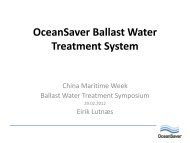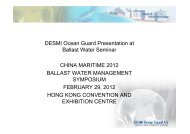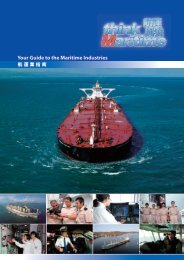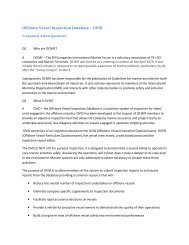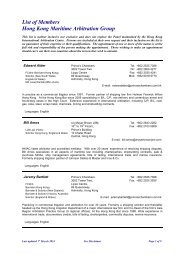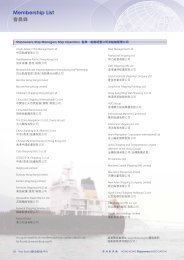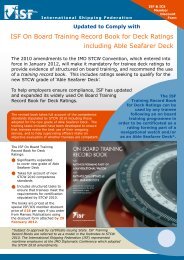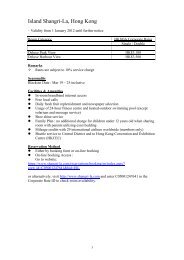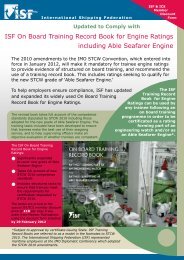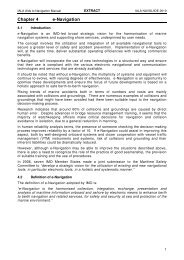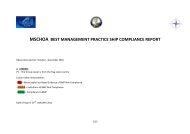PASSAGE PLANNING IN PORTS - A NAUTICAL INSTITUTE GUIDE ...
PASSAGE PLANNING IN PORTS - A NAUTICAL INSTITUTE GUIDE ...
PASSAGE PLANNING IN PORTS - A NAUTICAL INSTITUTE GUIDE ...
You also want an ePaper? Increase the reach of your titles
YUMPU automatically turns print PDFs into web optimized ePapers that Google loves.
The Nautical InstituteThe voyageDestination port arrivalEach of these stages will be affected by static and dynamic elements and cannot be fixed in thesame way as an aircraft’s flight plan. The static elements are such things as the physicaldimensions of the ship, draft, air draft, manoeuvring characteristics and cargo. The dynamicelements will consist of such elements as weather, tides, berth availability etc.Much of the dynamic element affecting the passage plan will be port specific and some portsmay have established under keel clearance (UKC) parameters which may differ from the ship’srecommended guidelines and these should be verified prior to arrival. Actual anticipated UKCbased on the latest data should be confirmed during the Master / pilot exchange - see below.In open waters, it is probable that alteration of course positions will be determined by referenceto lights or prominent coastal features and the position will be approximately at the intersectionof the appropriate tracks.In port waters, however, the scale of the charts available will provide a more detailed indicationof the ship’s intended track. It is quite probable that there will be a need to determine a wheeloverposition [WOP] at some distance from the intersection of the two track lines to ensure thatthe ship will achieve the intended track.Planned WOPs should be determined from the ship’s manoeuvring data and marked on theappropriate chart or charts. It may be appropriate to consider the use of parallel indextechniques to determine this position.In tankers, for example, where the passage is based on a vague instruction of a nominated port“for orders”, it will be difficult to for the navigator to develop a full berth to berth passage plan.However, when the load or discharge port is confirmed, the process of passage planningremains the same. He will then have a better indication of ETA and can make appropriatecalculations with respect to tides, particularly where there may be tidal influences on theprogress of the voyage.8 / 2109-11-2009Passage Planning in Ports_v2



